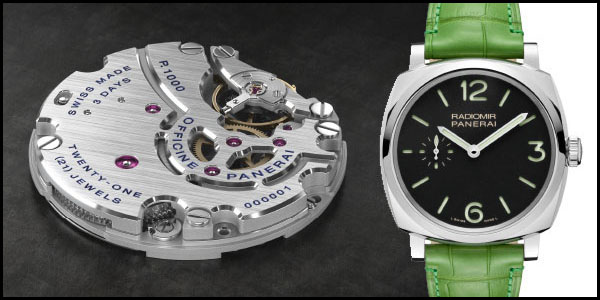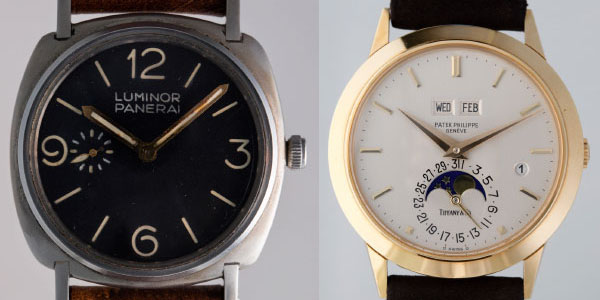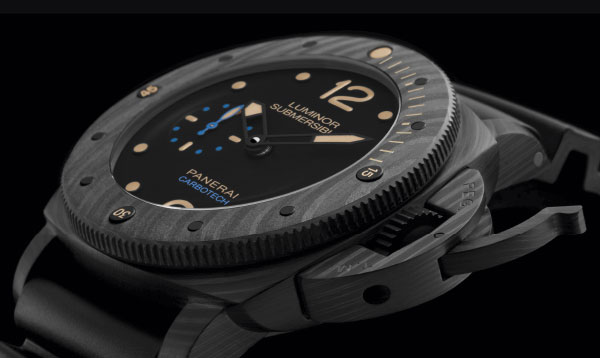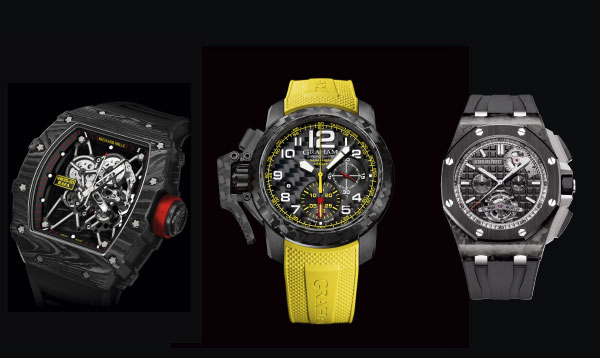
Panerai occupies a unique position in the watchmaking world. Although the original “Officine” was created in 1860, the watches it produces only became available to the public in 1993. Until then, the various developments and products by the Florence-based brand were dedicated exclusively to the Italian navy, an experience that enabled Panerai to patent a number of systems and above all to test them in the most credible possible manner. Their arrival in watch stores implied its own challenges, largely due to the substantial size of its cases with their eminently military design. However, the daring bid proved successful since the brand immediately found its place on the wrists of a number of male and female stars, igniting a trend for outsized watches. Since them, Panerai has adopted a slightly more low-key approach and the model loaned to us for this test bench is a prototype of the new Radiomir 1940 42mm.
Exterior :
Panerai’s historical developments and patents mostly related to the case. How about today? First of all, the object of this test bench is accurately named, since it features the 1940 version of the Radiomir cushion-shaped case. That was the year that the welded wire-lugs and the cone-shaped crown were replaced by monobloc lugs and a screw-locked cylindrical crown meeting new norms. Despite its more discreet 42mm size and its transparent sapphire crystal back, the case of this Radiomir is reliably water-resistant to 10atm. In its 2015 version, the dial displays the small seconds at 9 o’clock in addition to the hours and minutes. Otherwise, the design and the iconic construction of the Panerai dials remain the same. A first plate is coated with a luminescent material. These days Super-LumiNova replaces Radiomir (the latter being the name of a luminescent material patented by Panerai) while providing comparable luminescent properties. A second plate, in which the numerals and hour-markers are cut out, is laid over the first. The indications appear distinctly by day or night. Although the design of this watch as a whole has always been guided by a purely functional vocation, it features a powerful design with a pleasingly balanced combination of curves and sharp angles.
Movement :
Yesterday’s military secret is now common knowledge: movements that equipped Panerai watches during the brand’s proud naval-dedicated history were supplied by Rolex that held a virtual monopoly of the reputation for reliability. As soon as it opted to pursue civilian missions, the Italian brand naturally had to find new movements. Its first “public” models were equipped with Unitas calibers – a wise choice, since their reliability and size were a perfect match for the product. But this was not an “in-house movement” and it was joining the Richemont group that sealed the brand’s destiny as a Manufacture.
The P.1000 caliber powering this watch stems from a fully integrated development process. It is driven by two barrels ensuring a 72-hour power reserve and its balance oscillates at 28,800 vibrations per hour, a standard frequency these days. This caliber has nothing else to prove other than its reliability and its precision, two missions it fulfills to perfection. The only “fancy touch” is the seconds-resetting when the winding stem is in the time-setting position.
The architecture and the construction of this caliber are entirely in tune with Panerai’s vocation and its “military” past. Functionality and reliability are the predominant first impression. One might even at first glance consider these models as somewhat austere. But they deserve a closer look. The decoration on the bridges is a daring but praiseworthy choice. Panerai has decided to finish their surface with straight-graining, an apparently simple choice that is nonetheless delicate and difficult to perform, especially by beveling the edges. While the polishing of the angles is pretty standard (and perfectly acceptable), the various surfaces are quite distinct from each other. The focus here is on consistency and common sense rather than the trend among certain Manufactures to aspire to the realm of Haute Horlogerie whatever their identity. Finally, one notes the pleasing design of the barrel bridge and the going train centered around the fourth wheel.
Tests :
It is not surprising to see that the watch exterior lives up to its promises. Functionality, robustness, water resistance and readability: all the qualities one expects from a Panerai are indeed there.
In terms of movement performances, the amplitudes are good at 0, 24 and 48 hours, respectively measured at between 255° and 295° in horizontal positions and between 235° and 275° in vertical positions. The two power-reserve measurements also comfortably exceeded the data supplied by the manufacturer, at more than 75 hours in both instances. It is on the wrist that the Radiomir 1940 42mm reveals its key assets. Its exceptional ergonomics make it both comfortable and elegant to wear for both men and women.
Conclusion:
In “going public”, Panerai also sparked a number of trends and fashions. The Florence-based brand has nonetheless proved capable of preserving its identity, its values, but above all the remarkable qualities that have forged its well-deserved reputation. It has thereby successfully negotiated a tricky transition that has caused many brands to lose their way. As confirmed by this Radiomir 1940 42mm, Panerai has managed to become more widely available and to adapt to every-day life situations while safeguarding its technical assets and its unique character within the watch industry. Given its excellent price positioning, the Radiomir 1940 42mm is probably one of the finest possible responses to the difficult times watchmaking is currently going through.






